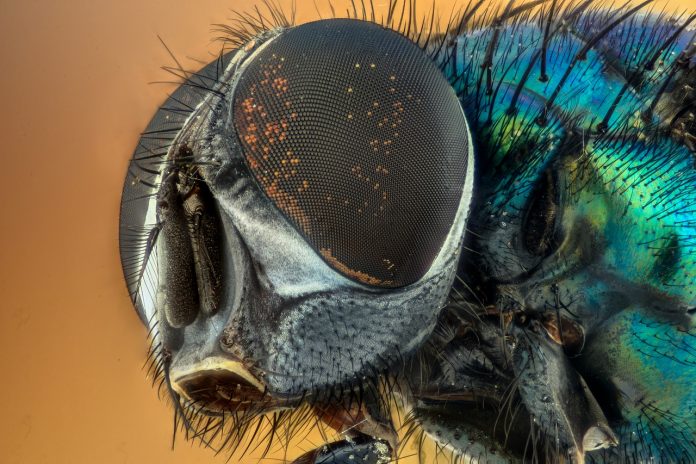As days get warmer and summer approaches, many natural events are inevitable. Birds nest, bullfrogs bellow, and bats patrol our backyards at night.
Another certainty is that insects become a dominant life form. Most are harmless, but a few can make life miserable.
Flies
Today, let’s focus on flies. Flies are classified into the Order Diptera (from the Greek “di,” meaning two, and “ptera,” meaning wings). Virtually all flies have two functional wings.
According to Erica McAlister, author of the recent book, The Secret Life of Flies (2017, Firefly Books, $29.95), entomologists have named approximately 160,000 species of flies.
Some experts suggest there could be as many as 800,000 species. And McAlister should know; she is curator of Diptera at the Natural History Museum in London.
McAlister’s love affair with flies began as a child. She would find dead animals in the garden and be intrigued, “by these wiggling, feeding machines” (that most of us would call maggots).
McAlister’s affection for flies seems to color her view of all of nature. She points out that mammals (5,400 species) and birds (10,000 species) get a disproportionate amount of scientific, financial, and popular attention simply because they are larger and more charismatic.
The world of flies is huge and most of us know little about it. For example, if I ask you to name five species of flies, I suspect most of you would be stuck after the ubiquitous “house fly.”
If you name dragonfly, damselfly or mayfly, you would strike out. All have four wings, so none is a true fly.
And yet, I’m sure many of you are on foul-mouthed speaking terms with a variety of dipterans.
Horse flies
On farms, horse flies are huge and equipped with razor sharp mouthparts. Though their favorite victims are farm animals, when they land on us, they slice and dice a patch of skin and sop up blood before we can even feel the bite’s searing pain.
In the woods, smaller deer flies play a similar, equally painful role.
Black flies
In the north woods, black flies make up for what they lack in size with pure numbers.
Many years ago my wife and I drove more than 150 miles to camp in northern Michigan. Before we even pitched a tent, thousands, maybe tens of thousands of blood-sucking black flies descended upon us.
We jumped back in the van and drove immediately back home.
Mosquitoes
And then there are mosquitoes. Yes, mosquitoes are flies. And they transmit human diseases such as malaria, yellow fever, West Nile virus, encephalitis and Zika, to name a few.
As many as a million humans die each year from diseases transmitted by flies. These nasty flies, however, are the exception.
Most flies are harmless and many are beneficial.
Benefits
In fact, McAlister argues that without flies, life would be other-worldly. Many flies pollinate flowers, and if flies did not pollinate the plant Theobroma cacao, there would be no chocolate. That alone is a reason to love flies.
Fruit flies, Drosophila melanogaster, have been the backbone of modern genetics for 100 years. Work with these tiny flies has given the medical community important insights into human diseases such as Alzheimer’s and Parkinson’s.
And, in 2000, the fruit fly was the first animal to have its genome sequenced.
Flies also have a tremendous impact on the natural world. Many flies control pests. Hoverfly larva, for example, eat aphids. And myriad birds eat flies.
They are especially critical food sources for nestlings. Without flies, many songbird populations might crash. And many flies serve as natural garbage composters by eating feces and dead flesh.
I suspect most people would find a world without flies entirely uninhabitable.
The Secret Life of Flies is a fascinating read, but it’s not for everyone. Some parts are just plain gross (check the index and learn about botflies). But the many color photographs add immeasurably to the book’s appeal.
Curious naturalists of all ages will find The Secret Life of Flies quotable and entirely irresistible.













